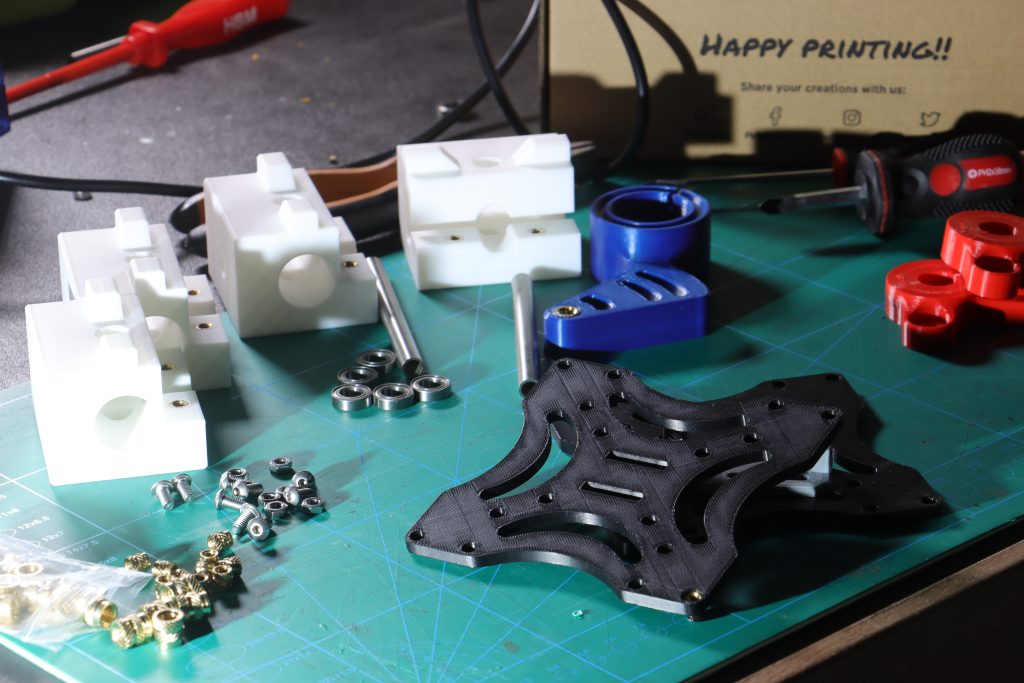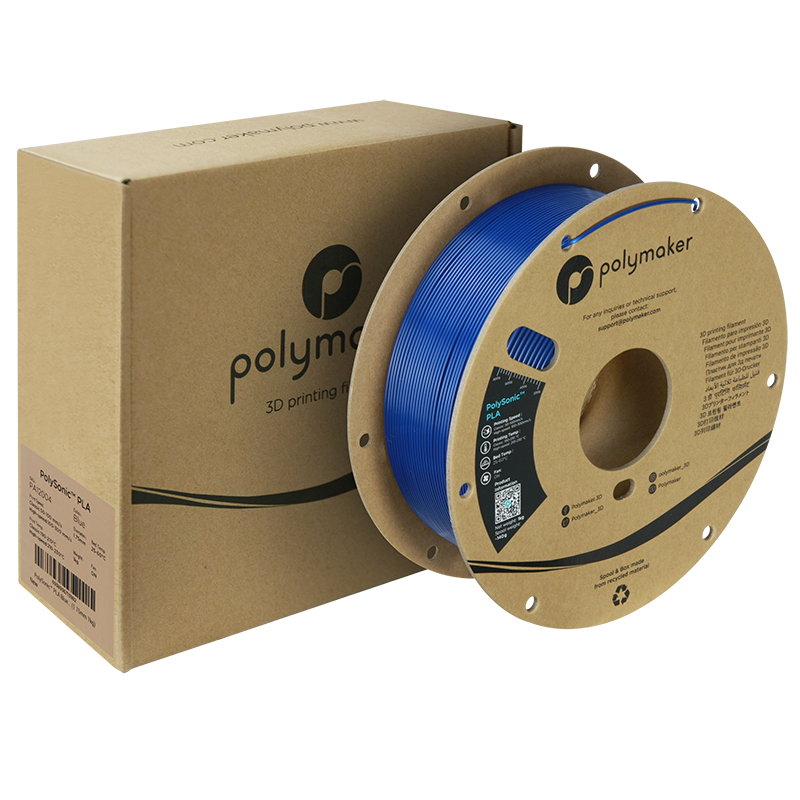Polymaker has launched its first new 3D printing materials under what is expected to be a series of filaments targeting the growing high-speed FDM 3D printer market.
PolySonic PLA is designed for 3D printing at over 300mm/s, while PolySonic PLA PRO is an “improved toughness PLA compounded with impact modifiers that produce ductility similar to ABS and stiffness outperforming ASA & PETG.”
Dr. Xiaofan Luo, Polymaker’s founder, said, “The latest generation of 3D printers have set a new benchmark for fast printing. But materials are still the missing link. PolySonic is Polymaker’s answer to the new era of high-speed FFF Printing.”

Is Polymaker the 3D Printing Industry materials company of the year? Make your nominations for the 3D Printing Industry Awards now.
The development of Polymaker’s PolySonic high-speed 3D printing filament
Polymaker says that based on its experience in 3D printing, the new material family is specifically designed to address three pivotal criteria: Extrusion, Forming, and Mechanical Properties. The objective is to provide materials with features such as enhanced performance, precision, and mechanical strength.
To achieve this, Polymaker has sought to conduct work on extrusion dynamics to understand how hardware decisions affect extrusion capabilities and how PolySonic combats challenges with enhanced volumetric flow. Regarding extrusion efficiency, the company says PolySonic outperforms with a 40% boost in volumetric flow rate compared to regular PLA filaments, alleviating under-extrusion concerns at escalated printing speeds.
Understanding forming mechanics has involved an exploration of the post-nozzle forming attributes of the filament, particularly its rapid cooling, forming consistency, and detailing. With enhanced rheology, PolySonic transforms from fluid to solid with minimal shrinkage, ensuring sharp detailing, accurate corners, and efficient handling of steep overhangs, even at high flow rates.
Finally, examining mechanical integrity requires recognition of the nuances of mechanical properties as printing speed surges, addressing common pitfalls, and ensuring integral part strength. Polymaker testing found that while typical filaments suffer significantly in mechanical strength at high speeds, PolySonic exhibits minimal degradation. Comparative tests reveal only a 6% drop in PolySonic’s mechanical properties at high printing speeds versus a 24% drop for standard PLA.

To stay up to date with the latest 3D printing news, don’t forget to subscribe to the 3D Printing Industry newsletter or follow us on Twitter or liking our page on Facebook.
While you’re here, why not subscribe to our Youtube channel? featuring discussion, debriefs, video shorts and webinar replays.
Are you looking for a job in the additive manufacturing industry? Visit 3D Printing Jobs for a selection of roles in the industry.
Featured image shows a close up Printing 300mms. Photo via Polymaker.



